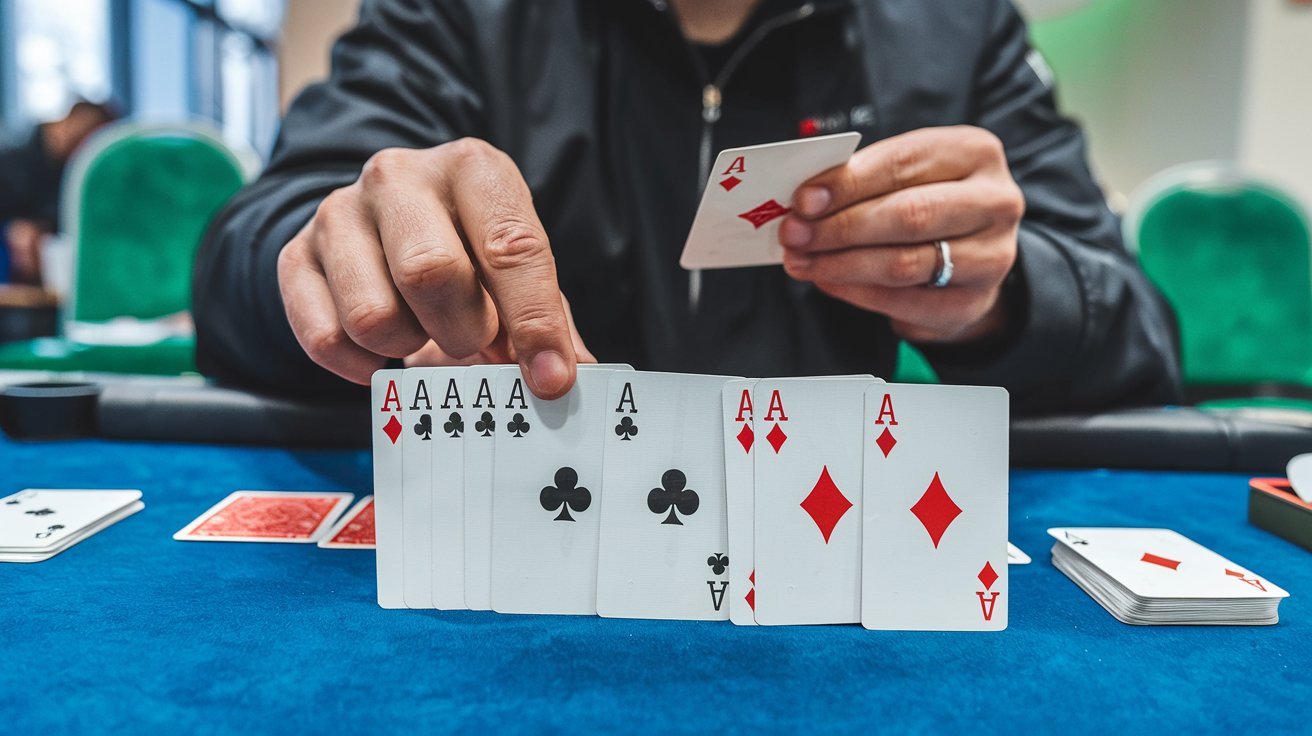Rummy is a game that combines skill, strategy, and a bit of luck. One of the most crucial elements of Rummy is how you manage your hand. Your ability to organize your cards, discard wisely, and form melds (sets or runs) quickly can make the difference between winning and losing. As a player, managing your hand effectively will help you make smarter decisions, reduce the risk of accumulating unnecessary points, and increase your chances of completing your hand before your opponents.
In this blog, we’ll dive into Rummy tips that will teach you how to manage your hand effectively. These strategies are designed to help you organize your cards, evaluate your options, and make the best decisions, whether you’re playing Gin Rummy, Indian Rummy, or any other variant.
The Importance of Hand Management in Rummy

Hand management in Rummy isn’t just about holding onto the best cards; it’s about making strategic decisions throughout the game. It involves:
- Organizing your cards into possible sets or runs.
- Deciding which cards to keep and which to discard.
- Adjusting your strategy as the game progresses based on your hand and your opponent’s moves.
An effective hand management strategy helps you avoid being left with high-value cards, reduce points in your hand if you don’t complete your melds, and maximize your opportunities for quick and efficient play.
1. Organize Your Cards Early
The first step to managing your hand effectively is to organize your cards. By grouping your cards based on suits and ranks, you can quickly assess what combinations are possible and see the gaps that need to be filled. This organization will help you make quicker decisions as the game progresses.
How to Organize Your Cards:
- Group by Suit: Arrange your cards in suits — spades (♠), hearts (♥), diamonds (♦), and clubs (♣). This makes it easier to spot potential runs (sequences of consecutive cards of the same suit).
- Group by Rank: Once the suits are organized, separate cards by their ranks. This helps you identify sets (three or more cards of the same rank) that could form a meld.
- Identify Incomplete Runs or Sets: Once you’ve organized your cards, identify any incomplete runs or sets. For example, if you have 5♠ 6♠, you’re one card away from a run (either 4♠ or 7♠). The same logic applies to incomplete sets.
Tip:
- Organize your cards immediately after the deal. This will help you see potential combinations faster and avoid confusion during the game.
2. Assess Your Hand and Choose a Strategy
Once your cards are organized, take a moment to assess your hand. Are you closer to forming a set or a run? Are there cards you are unlikely to use? By evaluating your hand, you can choose an appropriate strategy and focus on completing your melds as efficiently as possible.
How to Assess Your Hand:
- Look for Gaps: Does your hand contain consecutive cards in the same suit? If so, you’re probably aiming to complete a run. If not, you might focus on creating sets.
- Prioritize Runs: Generally, forming runs is easier than forming sets in Rummy. You’ll have more opportunities to complete a run since there are multiple cards you can draw to extend a sequence. If you have cards in sequence, prioritize completing them over making sets.
- Consider Flexibility: Keep cards that can help you form multiple possible runs or sets. For example, 5♠ and 6♠ can easily form a run with either 4♠ or 7♠.
Tip:
- Start by focusing on runs if you have several cards of the same suit in order, and avoid getting stuck with cards that can’t form a sequence.
3. Know Which Cards to Keep and Which to Discard
The next step is to decide which cards to keep and which to discard. The key to effective hand management is minimizing the cards you hold and making sure that the cards you retain will help you complete your sets or runs.
What to Keep:
- Cards that complete your melds: If a card will help complete a set or run, keep it. For example, if you have 3♠ 4♠ 5♠, and you draw a 6♠, it’s worth keeping to complete the sequence.
- Low-value cards: If possible, hold onto low-value cards like 2s and 3s, as they can often fit into multiple runs or sets.
- Versatile cards: Cards like 7s can fit into multiple runs in different suits, so they are valuable to keep in your hand.
What to Discard:
- High-value cards: If you can’t use high-point cards (Kings, Queens, Jacks, and Aces) in a set or run, discard them early. Holding onto these cards increases the chances of getting stuck with high points if you don’t complete your hand.
- Unnecessary duplicates: If you have multiple cards that don’t fit into your melds, discard them to minimize your points. For example, if you’re holding 4♠ 4♦ 4♣ but have no way of completing the set, it might be better to discard the duplicates.
- Cards that don’t fit into your hand: If you have a card that doesn’t contribute to any of your potential sets or runs, discard it. For instance, if you have 6♠ but nothing else that forms part of a sequence, discard it to reduce the number of cards in your hand.
Tip:
- If you have multiple high cards (like face cards), aim to discard them as soon as possible. The longer you hold onto them, the more likely you are to end up with a high-point hand.
4. Play Defensively: Discard Wisely to Block Opponents

In Rummy, it’s not just about managing your hand; it’s also about managing your opponent’s chances. By carefully choosing your discards, you can block your opponents from completing their hands.
How to Block Your Opponents:
- Avoid discarding cards that are part of your opponent’s set or run. If you’ve noticed that your opponent is discarding a lot of cards of the same suit or rank, avoid discarding similar cards. For example, if your opponent is working on 7♠ 8♠ 9♠, don’t discard a 6♠ or 10♠, as it will help them complete the run.
- Watch their discards: If you see your opponent discard a card from a certain suit or rank, it’s likely they don’t need it. Use this to gauge their strategy and avoid discarding useful cards to them.
- Block with strategic discards: If you know your opponent is going for a certain run, discard cards that disrupt their strategy. For example, if they need a 4♠ to complete a run, discard a 5♠ instead of a 3♠, which might not be part of their strategy.
Tip:
- Pay attention to your opponents’ playing patterns and adjust your discards accordingly. By doing so, you’ll prevent them from completing their sets and runs and increase your chances of winning.
5. Keep Track of the Cards in the Deck
One of the most effective ways to manage your hand is to keep track of the cards that have been played. If you can remember which cards have been discarded and which are still in the deck, you’ll have a better idea of which cards to hold onto and which to discard.
How to Keep Track:
- Observe discarded cards: Every time a card is discarded, take note of it. Knowing which cards are out of the game helps you make smarter decisions about which cards are still available for your hand.
- Count the cards in play: If you’re playing with multiple players, keep track of how many cards are left in the stockpile. If the stockpile is running low, be more cautious with your discards and try to finish your hand quickly.
- Know the suits: If you see that most of a particular suit has been discarded, avoid keeping cards in that suit, as they’ll be harder to complete.
Tip:
- Practice tracking cards in Rummy to sharpen your memory. The more familiar you become with the cards that have been discarded, the better you’ll be at forming your melds quickly.
6. Adapt Your Strategy Based on the Game Progress

Rummy is a dynamic game, and your strategy should evolve as the game progresses. You’ll need to adapt based on your hand, the number of cards in play, and the behavior of your opponents.
How to Adapt Your Strategy:
- Early game: Focus on organizing your cards and forming as many runs as possible. The more runs you have, the more options you’ll have to complete your hand.
- Mid game: As the game progresses, begin to discard high-value cards and focus on completing your sets and runs. If your opponents are close to finishing, start playing more defensively by blocking their moves.
- Endgame: If you’re close to going out, prioritize completing your hand as quickly as possible. If you’re stuck with high-point cards, focus on reducing the number of cards in your hand and going out.
Tip:
- Pay attention to how the game is unfolding and adjust your hand management strategy accordingly. If you’re ahead, play cautiously; if you’re behind, play aggressively.
Conclusion: Mastering Hand Management in Rummy
Effective hand management in Rummy is crucial for achieving success in the game. By organizing your cards, deciding which to keep and which to discard, and playing defensively, you can form sets and runs faster and increase your chances of winning. Remember, Rummy is as much about strategy as it is about the cards you’re dealt. The better you manage your hand, the more likely you are to stay ahead of your opponents.
With practice, you’ll be able to assess your hand more quickly, discard more strategically, and read the game better, making you a formidable Rummy player. So, next time you play, keep these tips in mind, and you’ll be well on your way to mastering the art of hand management in Rummy!

Zareb Saleh is a journalist at Gulf Today and a ghostwriter for Gameoholic, specializing in gaming, technology, and digital culture. With a keen eye for industry trends, he delivers insightful stories that engage and inform readers.




